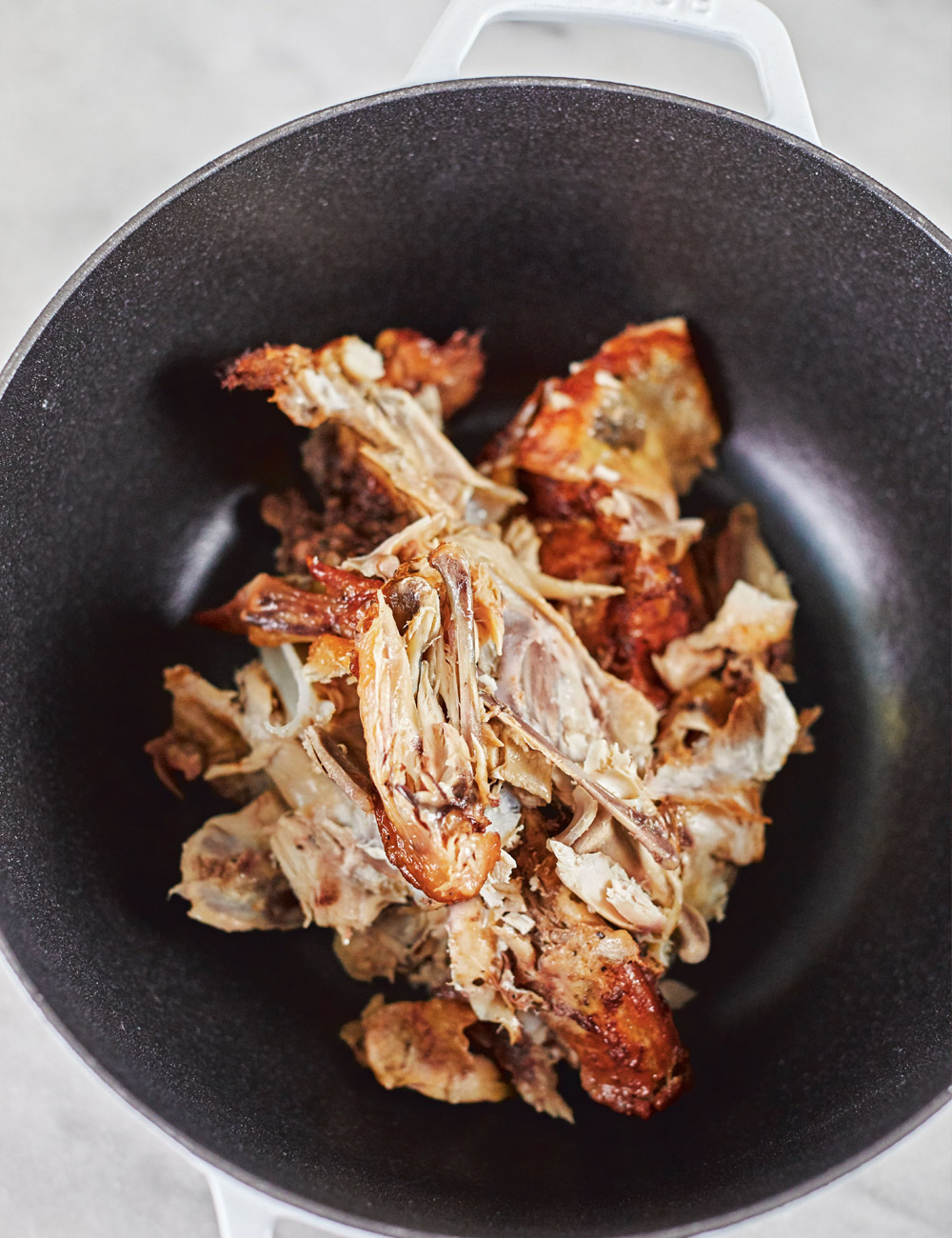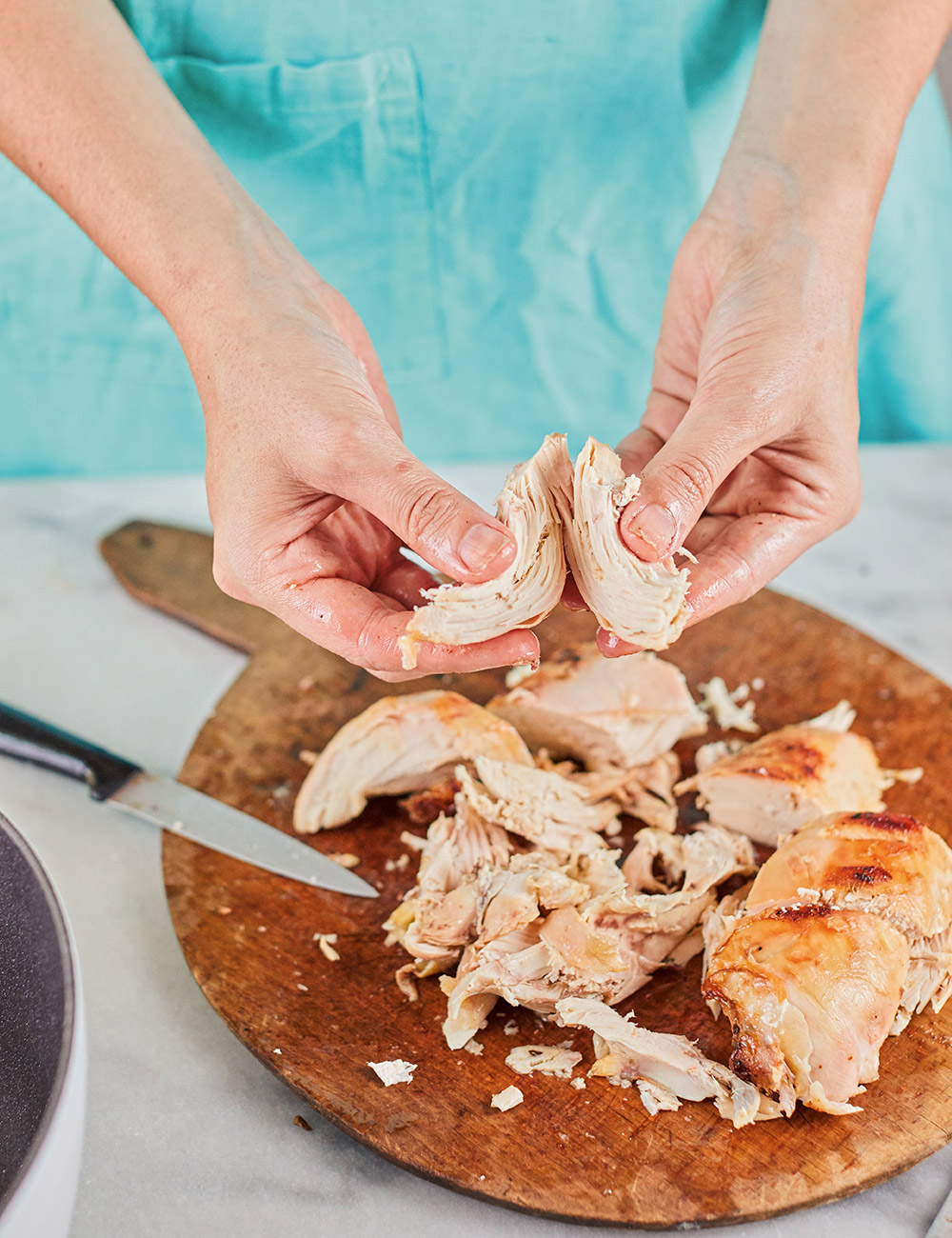Pam Anderson’s original How to Cook Without a Book published 18 years ago. To this day, it is one of the best cookbooks to buy if you wish to make weekday dinner at home a regular part of your life.
Anderson’s approach is born out of a collection of ideals that aren’t idyllic. It is practical, almost laconic, in its path to getting you to make dinner more. It is a cookbook that trains the reader to no longer need cookbooks. This fall, Anderson updated the cookbook to better fit what cooks of today want and need. It is still filled with hacks and clever ideas for saving time and money, and what follows is a simplified version one of the best: how to turn two rotisserie chickens into (at least) three meals. It is alarmingly simple and can be done in one cooking session — from using the legs and thighs for dinner tonight, to prepping a powerful broth for soups tomorrow and shredding the breasts for everything in between.
Break the Chickens Down
The Legs: “While the rotisserie chickens are still warm, start by carving off the four drumsticks and thighs, leaving their skin intact. Chicken drumsticks and thighs taste best on the same day they’re roasted.”
The Breasts: “Remove the skin from the breasts and toss it into a pot. Use a knife to remove the four breast halves from the bones.”
The Bones: “Remove the excess meat from the chicken carcasses, add the remaining skin and bones to the pot.”
What to Do with the Legs
Though the chicken legs and thighs aren’t bad right off the bird, Anderson argues they can be dramatically elevated with minimal effort, and that a quick second roasting with a quick glaze and crunch factor acts as a revival mechanism for occasionally dried out meat.
“If you’ve got peach preserves, apple butter, or cranberry sauce in the fridge, add a pinch of cloves and transform ho-hum rotisserie chicken legs into something special,” she writes. Anderson provides a few quick recipes for glazing the legs, but also says you could just as easily use dijon mustard or a store-bought barbeque sauce. For crunch, she recommends something simple that you likely already have: chopped nuts, Panko breadcrumbs or sesame seeds.
Prepare: heat oven to 450 degrees, brush glaze and sprinkle crunch on the legs and thighs and put in the oven on an aluminum foil-lined baking sheet. It should take no more than 15 to heat through and begin caramelizing.

What to do with the Bones
Anderson notes that she buys rotisserie chickens “as much for the bones as for the meat,” and that throwing some broken down carcasses into a big pot with some water and chicken broth and letting them rip for a little while saves money and makes for a much better soup and stew base than store-bought options.
Prepare: Place remaining bones and skin from chickens in a large pot and add one quart of chicken broth and one-and-a-half quarts of water. Bring to simmer at medium-high heat, then reduce to medium-low and cook with the pot partially uncovered for about half an hour. Then, strain the bones and skin from the broth and freeze it. The yield should be roughly two quarts of homemade broth — enough for two pots of soup for four people each.

What to do with the Breasts
Anderson writes, “With roasted chicken legs for dinner, a pot of stock brewing on the stove, there are two big lobes of chicken left for yet another meal and a pot of soup.” The breasts, which are the meatiest and easiest part of the chicken to stow away for another day, are to be chopped or shredded and used as the base for a meal later in the week.
Anderson recommends using the breast meat for pulled chicken tacos, chicken curry, chicken salad, barbecue chicken pizza and more.

